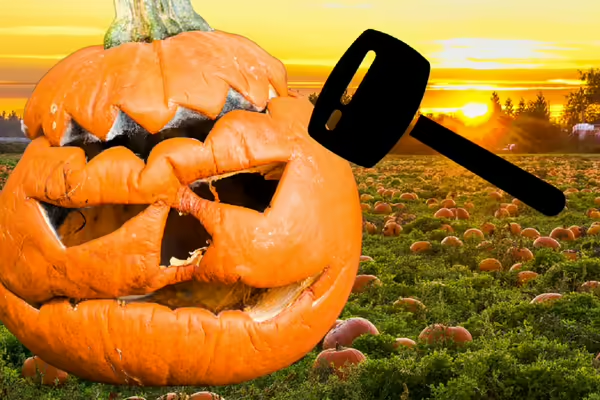
Fall is the pumpkin’s time to shine, but what happens when it is time to say goodbye to the short-lived jack-o-lanterns? Green your Halloween by recycling pumpkins into compost at a free, outdoor Pumpkin Smash offered by the University of Illinois Extension and Sauk Valley Community College (SVCC).
Bring your pumpkin—that is free of candles, paint, ribbons or any other non-organic materials—to the SVCC pumpkin field on Saturday, November 2, from 10:00 a.m. to noon. Then choose a fun way to dispose of your spent gourd, including using a mallet, bat, catapult or slingshot; dropping it; or using it as a piñata. Kids are also invited to take part in other free, pumpkin-themed activities. The college is located at 173 IL Route 2, Dixon IL.
Pumpkins are an organic waste that produces the potent greenhouse gas methane as they decompose without oxygen in landfills. These decaying pumpkins also leach water that filters through the trash piles and pollutes nearby waterways.
Instead, choose to smash and recycle Halloween pumpkins at this community event. Pumpkins smashed will be composted into the SVCC field soil to help next year’s pumpkins grow. Since 2019, when Illinois Extension hosted its first Pumpkin Smash series of events across the state, more than 50 tons of compostable waste have been kept out of landfills.
University of Illinois Extension develops educational programs, extends knowledge, and builds partnerships to support people, communities, and their environments as part of the state's land-grant institution. Extension serves as the leading public outreach effort for University of Illinois Urbana-Champaign and the College of Agricultural, Consumer and Environmental Sciences in all 102 Illinois counties through a network of 27 multi-county units and over 700 staff statewide. Extension’s mission is responsive to eight strategic priorities — community, economy, environment, food and agriculture, health, partnerships, technology and discovery, and workforce excellence — that are served through six program areas — 4-H youth development, agriculture and agribusiness, community and economic development, family and consumer science, integrated health disparities, and natural resources, environment, and energy.